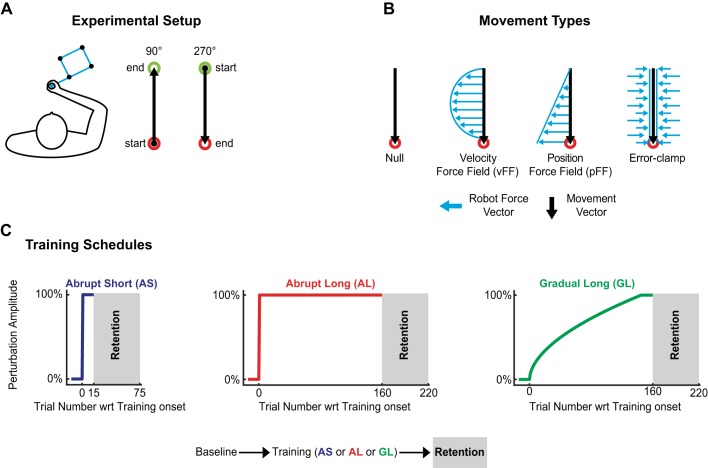Fig. 1.
Experimental setup and paradigm. A: participants grasped the handle of a robotic manipulandum (blue) to make rapid 10-cm, point-to-point reaching movements to 1-cm circular targets in the 90° and 270° directions. B: 3 types of trials were employed. In null (no force) trials, used for task familiarization and to establish a performance baseline, the robotic manipulandum produced no forces. In force-field (FF) trials, the robot manipulandum applied forces (blue arrows) that were proportional in magnitude and perpendicular in direction to either the velocity (vFF) or position (pFF) of hand motion (black arrows). In error-clamp trials, the manipulandum steered in a virtual channel directed toward the target to minimize lateral deviations (see methods). C: after an initial baseline period, participants completed 1 of 3 training schedules (abrupt short, AS; abrupt long, AL; or gradual long, GL). These schedules varied in duration (short versus long) or exposure rate (abrupt versus gradual). All 3 training schedules were followed by a retention period consisting of 60 consecutive error-clamp trials. wrt, With respect to.

